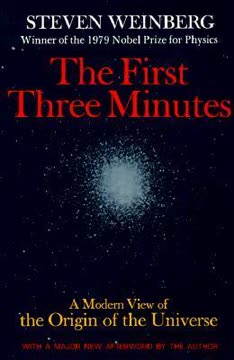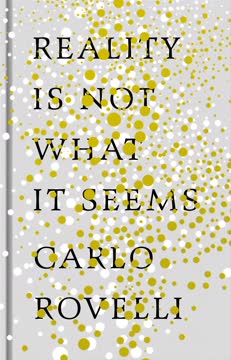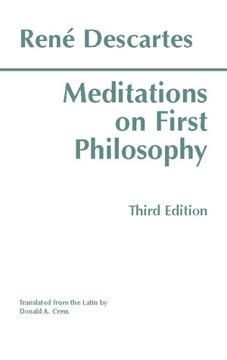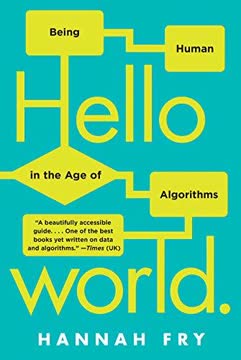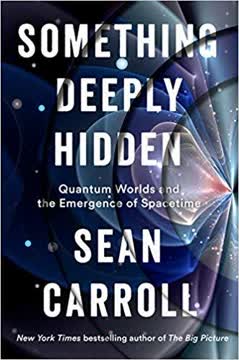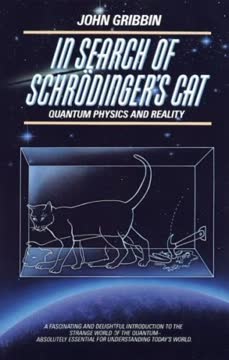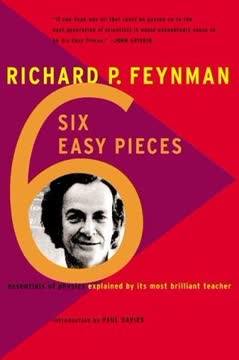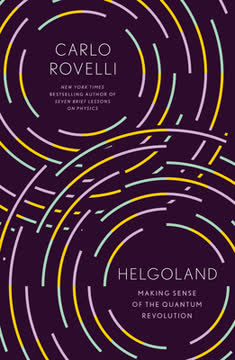نکات کلیدی
1. فیزیک کوانتوم دنیای عجیبی را آشکار میکند که در آن ذرات مانند امواج رفتار میکنند
همه چیز در جهان از این ذرات کوانتومی ساخته شده است.
دوگانگی موج-ذره. در سطح کوانتومی، ذراتی مانند الکترونها و فوتونها هم ویژگیهای ذرهای و هم ویژگیهای موجی را نشان میدهند. این بدان معناست که آنها میتوانند در برخی آزمایشها بهصورت ذرات مجزا رفتار کنند، در حالی که در دیگر آزمایشها الگوهای تداخلی مانند امواج نشان میدهند.
برهمنهی. اشیاء کوانتومی میتوانند بهطور همزمان در چندین حالت وجود داشته باشند تا زمانی که اندازهگیری شوند. به عنوان مثال، یک الکترون میتواند در برهمنهی از سطوح انرژی یا موقعیتهای مختلف باشد. این منجر به اثرات عجیبی مانند تونلزنی کوانتومی میشود، جایی که ذرات میتوانند از موانع عبور کنند.
آزمایشهای کلیدی که دوگانگی موج-ذره را نشان میدهند:
- آزمایش دو شکاف با الکترونها
- پراش مولکولها
- تداخل کوانتومی مولکولهای بزرگ مانند فولرنهای C60
2. اصل عدم قطعیت دانش ما از ذرات کوانتومی را محدود میکند
عدم قطعیت همچنین اولین جایی است که فیزیک کوانتوم با فلسفه برخورد میکند.
عدم قطعیت بنیادی. اصل عدم قطعیت هایزنبرگ بیان میکند که برخی جفتهای ویژگیهای فیزیکی، مانند موقعیت و تکانه، نمیتوانند بهطور دقیق بهطور همزمان تعیین شوند. این به دلیل محدودیتهای اندازهگیری نیست، بلکه یک ویژگی بنیادی سیستمهای کوانتومی است.
انرژی نقطه صفر. اصل عدم قطعیت به مفهوم انرژی نقطه صفر منجر میشود - کمترین انرژی ممکن که یک سیستم کوانتومی میتواند داشته باشد. حتی در دمای صفر مطلق، ذرات به دلیل عدم قطعیت کوانتومی مقداری حرکت را حفظ میکنند.
پیامدهای اصل عدم قطعیت:
- محدود کردن دقت ساعتهای اتمی
- ایجاد تونلزنی کوانتومی
- منجر به "ذرات مجازی" در نظریه میدان کوانتومی
- تعیین محدودیتهای بنیادی بر دقت اندازهگیری
3. اندازهگیری کوانتومی بهطور فعال وضعیت ذرات را تحت تأثیر قرار میدهد
اندازهگیری یک فرآیند فعال است. عمل اندازهگیری چیزی واقعیتی را که مشاهده میکنیم ایجاد میکند.
فروپاشی تابع موج. در تفسیر کپنهاگ، اندازهگیری یک سیستم کوانتومی باعث فروپاشی تابع موج آن به یک حالت معین میشود. این بدان معناست که عمل اندازهگیری بهطور فعال سیستم اندازهگیری شده را تحت تأثیر قرار میدهد.
اثر زنو کوانتومی. اندازهگیریهای مکرر میتوانند در واقع از تکامل یک سیستم کوانتومی جلوگیری کنند. این نشان میدهد که اندازهگیری یک فرآیند غیرفعال نیست، بلکه یک فرآیند فعال است که بر سیستمهای کوانتومی تأثیر میگذارد.
آزمایشهای کلیدی در مورد اندازهگیری کوانتومی:
- آزمایش دو شکاف با آشکارسازها
- آزمایش پاککن کوانتومی
- آزمایشهایی که اثر زنو کوانتومی را نشان میدهند
4. درهمتنیدگی کوانتومی ارتباطات فوری در فواصل وسیع را ممکن میسازد
اندازهگیری وضعیت یکی از دو شیء درهمتنیده بهطور آنی وضعیت دیگری را تعیین میکند، مهم نیست چقدر از هم دور باشند.
عمل شبحوار از راه دور. ذرات درهمتنیده ویژگیهای همبستهای دارند، حتی زمانی که با فواصل زیادی از هم جدا شدهاند. اندازهگیری یکی بهطور آنی دیگری را تحت تأثیر قرار میدهد، بهنظر میرسد سریعتر از نور. این موضوع انیشتین را نگران کرد، که آن را "عمل شبحوار از راه دور" نامید.
قضیه بل. جان بل ثابت کرد که همبستگیهای درهمتنیدگی کوانتومی قویتر از آن است که با هر نظریهای از متغیرهای پنهان محلی توضیح داده شود. آزمایشها پیشبینیهای بل را تأیید کردهاند و نظریههای واقعگرای محلی را رد کردهاند.
کاربردهای درهمتنیدگی کوانتومی:
- رمزنگاری کوانتومی
- تلهپورت کوانتومی
- محاسبات کوانتومی
- آزمایشهای مکانیک کوانتومی در مقابل واقعگرایی محلی
5. تونلزنی کوانتومی به ذرات اجازه میدهد از موانع بهظاهر نفوذناپذیر عبور کنند
مکانیک کوانتومی پیشبینی میکند که حتی اگر انرژی کافی برای عبور از مانع نداشته باشید، هنوز هم احتمال دارد که در طرف دیگر ظاهر شوید.
نفوذ به مانع. در مکانیک کوانتومی، ذرات میتوانند از موانع انرژی پتانسیلی عبور کنند که بهطور کلاسیکی نباید بتوانند نفوذ کنند. این به این دلیل است که تابع موج آنها به مناطق ممنوعه کلاسیکی گسترش مییابد.
کاربردها. تونلزنی کوانتومی تجزیه رادیواکتیو را توضیح میدهد و فناوریهایی مانند میکروسکوپهای تونلزنی و حافظه فلش را ممکن میسازد. همچنین در همجوشی هستهای در ستارگان نقش دارد.
مثالهایی از تونلزنی کوانتومی:
- تجزیه آلفا در هستههای رادیواکتیو
- میکروسکوپ تونلزنی
- انتشار سرد در نمایشگرهای انتشار میدانی
- ترانزیستورهای تونلزنی کوانتومی
6. ذرات مجازی بهطور مداوم در فضا ظاهر و ناپدید میشوند، حتی در فضای خالی
حتی یک خلأ کامل نیز یک طوفان دائمی از فعالیت است، با "ذرات مجازی" که به لطف انرژی نقطه صفر برای لحظهای کوتاه ظاهر میشوند و سپس دوباره ناپدید میشوند.
نوسانات خلأ کوانتومی. اصل عدم قطعیت به ذرات اجازه میدهد بهطور موقت نقض حفظ انرژی کنند، بهسرعت ظاهر و ناپدید شوند. این منجر به یک خلأ کوانتومی پر از ذرات مجازی میشود.
اثرات قابل مشاهده. در حالی که بهطور مستقیم قابل تشخیص نیستند، ذرات مجازی اثرات قابل اندازهگیری دارند. آنها به اثر کازیمیر، انتشار خودبخودی و جابجایی لامب در طیفهای اتمی کمک میکنند. آنها ممکن است حتی در گسترش جهان نقش داشته باشند.
پیامدهای ذرات مجازی:
- تغییر لحظه مغناطیسی الکترون (عامل g)
- ایجاد جابجایی لامب در طیفهای اتمی
- کمک به اثر کازیمیر بین صفحات
- منجر به تابش هاوکینگ از سیاهچالهها
7. فیزیک کوانتومی جادو نیست - از قوانین ریاضی دقیق پیروی میکند
مکانیک کوانتومی جادو نیست. هرچقدر هم که غیرمحتمل یا شگفتانگیز بهنظر برسد، مکانیک کوانتومی یک نظریه علمی است که باید با اصول کلی فیزیک سازگار باشد.
چارچوب ریاضی. در حالی که اثرات کوانتومی اغلب عجیب بهنظر میرسند، آنها از ریاضیات دقیق نظریه کوانتومی پیروی میکنند. معادله شرودینگر و نظریه میدان کوانتومی چارچوبی دقیق برای محاسبات فراهم میکنند.
تأیید تجربی. نظریه کوانتومی با دقت فوقالعادهای آزمایش شده است. محاسبات در الکترودینامیک کوانتومی با آزمایشها تا 14 رقم اعشار مطابقت دارند، که آن را به دقیقترین نظریه آزمایش شده در علم تبدیل کرده است.
معادلات کلیدی مکانیک کوانتومی:
- معادله شرودینگر
- اصل عدم قطعیت هایزنبرگ
- معادله دیراک
- لاگرانژی مدل استاندارد
8. اثرات کوانتومی پدیدههایی از ساختار اتمی تا تولد جهان را توضیح میدهند
مکانیک کوانتومی دنیایی کاملاً عجیب را توصیف میکند، جایی که هیچ چیز قطعی نیست و اشیاء تا زمانی که اندازهگیری نشوند ویژگیهای مشخصی ندارند. این دنیایی است که در آن اشیاء دور بهطور عجیبی به هم متصل هستند، جایی که جهانهای کاملی با تاریخهای مختلف درست در کنار دنیای ما وجود دارند و جایی که "ذرات مجازی" در فضای خالی ظاهر و ناپدید میشوند.
ساختار اتمی. مکانیک کوانتومی پایداری اتمها، جدول تناوبی عناصر و پیوند شیمیایی را توضیح میدهد. این اساس درک تمام شیمی و علم مواد است.
کیهانشناسی. اثرات کوانتومی نقش مهمی در جهان اولیه ایفا کردند، توضیح منشأ ساختار کیهانی و حتی شاید خود بیگ بنگ. نوسانات کوانتومی تشکیل کهکشانها و ساختار بزرگمقیاس را بذر کردند.
حوزههایی که فیزیک کوانتومی در آنها ضروری است:
- فیزیک اتمی و مولکولی
- فیزیک ماده چگال
- فیزیک ذرات
- شیمی کوانتومی
- کیهانشناسی کوانتومی
9. فناوریهای کوانتومی وعده پیشرفتهای انقلابی در محاسبات و ارتباطات را میدهند
تلهپورت کوانتومی ممکن است کلید اطمینان از این باشد که وقتی اسکاتی شما را به سفینه اینترپرایز منتقل میکند، با همان افکاری که ترک کردهاید، برسید.
محاسبات کوانتومی. با بهرهگیری از برهمنهی و درهمتنیدگی، کامپیوترهای کوانتومی وعده افزایش سرعت نمایی برای برخی مسائل را میدهند. این میتواند زمینههایی مانند رمزنگاری، طراحی دارو و یادگیری ماشین را متحول کند.
ارتباطات کوانتومی. توزیع کلید کوانتومی رمزنگاری غیرقابل شکستن را ارائه میدهد، در حالی که تلهپورت کوانتومی انتقال حالتهای کوانتومی را ممکن میسازد. این فناوریها میتوانند اساس یک "اینترنت کوانتومی" آینده را تشکیل دهند.
فناوریهای کوانتومی نوظهور:
- کامپیوترهای کوانتومی
- حسگرهای کوانتومی
- رمزنگاری کوانتومی
- شبیهسازهای کوانتومی
- اندازهگیری کوانتومی
آخرین بهروزرسانی::
FAQ
What's "How to Teach Quantum Physics to Your Dog" about?
- Unique Approach: The book uses a humorous and accessible approach to explain complex quantum physics concepts by framing them as conversations between the author, Chad Orzel, and his dog, Emmy.
- Educational Intent: It aims to make quantum physics understandable to a general audience by breaking down difficult topics into relatable and simple explanations.
- Core Topics: The book covers fundamental quantum physics concepts such as wave-particle duality, the uncertainty principle, quantum entanglement, and quantum tunneling.
- Engaging Format: By using a dog as a conversational partner, the book adds a playful element to learning, making it engaging and less intimidating for readers new to physics.
Why should I read "How to Teach Quantum Physics to Your Dog"?
- Simplified Learning: The book simplifies complex quantum physics concepts, making them accessible to those without a scientific background.
- Humorous and Engaging: The conversational style between the author and his dog adds humor and relatability, making the learning process enjoyable.
- Broad Coverage: It covers a wide range of quantum physics topics, providing a comprehensive introduction to the subject.
- Practical Insights: Readers gain insights into how quantum physics applies to everyday life and modern technology, enhancing their understanding of the world.
What are the key takeaways of "How to Teach Quantum Physics to Your Dog"?
- Quantum Duality: Understanding that particles can exhibit both wave-like and particle-like properties simultaneously.
- Uncertainty Principle: Recognizing the fundamental limits on measuring certain pairs of properties, such as position and momentum.
- Quantum Entanglement: Learning about the nonlocal connections between particles that can affect each other instantaneously over distances.
- Quantum Tunneling: Grasping how particles can pass through barriers they seemingly shouldn't be able to, due to their wave nature.
How does Chad Orzel explain wave-particle duality in the book?
- Concept Introduction: Orzel introduces wave-particle duality by explaining that both light and matter exhibit properties of waves and particles.
- Everyday Examples: He uses relatable examples, such as a dog chasing a squirrel, to illustrate how particles can behave like waves.
- Historical Context: The book discusses historical experiments, like Thomas Young's double-slit experiment, to show how wave-particle duality was discovered.
- Visual Aids: Diagrams and illustrations help clarify how particles can interfere with themselves, demonstrating their wave-like nature.
What is the Heisenberg Uncertainty Principle according to "How to Teach Quantum Physics to Your Dog"?
- Basic Definition: The principle states that it is impossible to know both the position and momentum of a particle with absolute certainty at the same time.
- Measurement Impact: Orzel explains that the act of measuring one property affects the precision with which the other can be known.
- Philosophical Implications: The principle challenges classical physics' deterministic view, introducing fundamental limits to what can be known.
- Real-World Examples: The book uses simple analogies, like a dog trying to find a bone, to illustrate the concept of uncertainty in everyday terms.
How does the book describe quantum entanglement?
- Entanglement Basics: Quantum entanglement is described as a phenomenon where two particles become linked, such that the state of one instantly influences the state of the other, regardless of distance.
- Einstein's Challenge: The book discusses Einstein's discomfort with entanglement, famously calling it "spooky action at a distance."
- Experimental Evidence: Orzel explains how experiments, like those testing Bell's theorem, have confirmed the reality of entanglement.
- Practical Implications: The book touches on potential applications of entanglement, such as quantum computing and cryptography.
What is quantum tunneling, and how is it explained in the book?
- Tunneling Concept: Quantum tunneling is the phenomenon where particles pass through barriers that they classically shouldn't be able to, due to their wave-like properties.
- Energy Barrier Analogy: Orzel uses the analogy of a dog trying to get through a fence to explain how particles can "tunnel" through energy barriers.
- Real-World Applications: The book discusses how tunneling is essential for technologies like semiconductors and nuclear fusion in stars.
- Wave Nature: Tunneling is possible because particles are described by wavefunctions that extend into classically forbidden regions.
How does Chad Orzel use his dog to explain quantum physics concepts?
- Conversational Style: The book is structured as a series of dialogues between Orzel and his dog, Emmy, making complex topics more relatable.
- Simplified Analogies: Emmy's questions and Orzel's answers use everyday scenarios to break down abstract concepts into understandable terms.
- Humor and Engagement: The playful interactions between Orzel and Emmy add humor, keeping readers engaged and making learning enjoyable.
- Accessible Language: The use of a dog's perspective helps simplify scientific jargon, making the content accessible to a wider audience.
What are some of the best quotes from "How to Teach Quantum Physics to Your Dog" and what do they mean?
- "Quantum physics is neat stuff." This quote captures the author's enthusiasm for the subject and sets the tone for the book's exploration of quantum phenomena.
- "Discussing quantum physics with my dog is useful because it helps me see how to discuss quantum mechanics with humans." This highlights the book's approach of using simple, relatable analogies to explain complex ideas.
- "If you can look at the world the way a dog does, as an endless source of surprise and wonder, then quantum mechanics will seem a lot more approachable." This quote encourages readers to adopt a curious and open-minded perspective when learning about quantum physics.
- "Quantum mechanics is not magic." This serves as a reminder that while quantum physics can seem mysterious, it is grounded in scientific principles and evidence.
How does "How to Teach Quantum Physics to Your Dog" address common misconceptions about quantum physics?
- Clarifying Misunderstandings: The book tackles misconceptions by explaining that quantum mechanics, while counterintuitive, is not magic and follows scientific laws.
- Debunking Myths: Orzel addresses myths about quantum physics, such as the idea of free energy or quantum healing, by emphasizing the importance of scientific evidence.
- Real-World Applications: The book highlights practical applications of quantum physics, showing how it underpins modern technology and scientific advancements.
- Scientific Rigor: Orzel stresses the precision and accuracy of quantum mechanics, which has been tested and confirmed through numerous experiments.
What is the significance of the Copenhagen interpretation in the book?
- Interpretation Overview: The Copenhagen interpretation is one of the main philosophical frameworks for understanding quantum mechanics, emphasizing the role of measurement in determining quantum states.
- Wavefunction Collapse: It introduces the concept of wavefunction collapse, where a quantum system's state becomes definite upon measurement.
- Philosophical Implications: The interpretation raises questions about the nature of reality and the role of observers in the quantum world.
- Critiques and Alternatives: The book discusses critiques of the Copenhagen interpretation and presents alternative views, such as the many-worlds interpretation.
How does "How to Teach Quantum Physics to Your Dog" explain the concept of virtual particles?
- Virtual Particles Defined: Virtual particles are temporary fluctuations that appear and disappear in a vacuum, allowed by the energy-time uncertainty principle.
- Role in QED: They play a crucial role in quantum electrodynamics (QED), affecting interactions between particles like electrons and photons.
- Experimental Evidence: The book explains how the effects of virtual particles are observed indirectly through precise measurements, such as the electron's g-factor.
- Conceptual Challenges: Orzel addresses the counterintuitive nature of virtual particles, emphasizing their importance in understanding fundamental forces and interactions.
نقد و بررسی
کتاب چگونه فیزیک کوانتوم را به سگ خود آموزش دهیم عمدتاً نقدهای مثبتی به دلیل توضیحات قابل فهم از مفاهیم پیچیده کوانتوم دریافت میکند. خوانندگان از سبک نوشتاری شفاف نویسنده و استفاده از مثالهای روزمره قدردانی میکنند، اگرچه برخی گفتوگوهای مربوط به سگ را خستهکننده میدانند. این کتاب به دلیل عمق و توضیحات فنیاش تحسین میشود و برای کسانی که دانش قبلی از فیزیک دارند مناسب است. در حالی که برخی از خوانندگان همچنان با مفاهیم دست و پنجه نرم میکنند، بسیاری آن را مقدمهای لذتبخش و آموزنده برای فیزیک کوانتوم میدانند.
Similar Books
